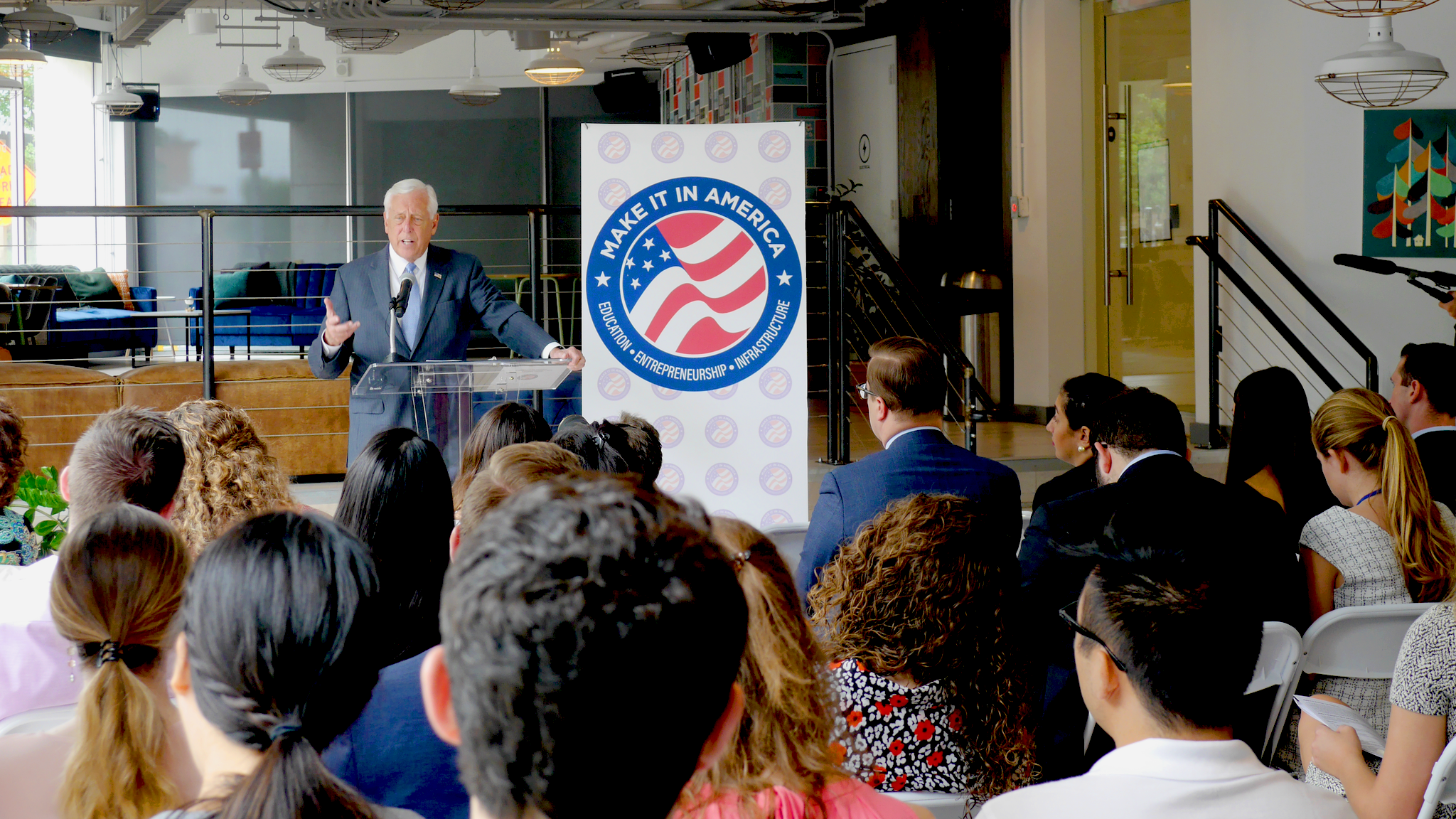Make It In America

In 2022, House Majority Leader Steny Hoyer and House Democrats unveiled the new Make It In America plan to create jobs and expand economic opportunity. With too many Americans only getting by instead of getting ahead, the plan focuses on four key areas where Congress can be a partner in creating the best conditions for the growth of jobs and opportunities. They are: education, entrepreneurship, infrastructure, and supply chain resilience. Twenty-two bipartisan Make It In America bills have now been enacted into law, including the Bipartisan Infrastructure Law in 2021 and the CHIPS and Science Act in 2022.
To read Leader Hoyer’s remarks on the updated Make It In America plan, click here. For more information on the goals and policy recommendations included in the Make It In America plan, click here.
First launched by Leader Hoyer in 2010 when our economic recovery from the 2008 global financial crisis was just beginning, the Make It In America plan has been focused on gathering the best ideas and transforming them into policies that Congress can enact to help workers and businesses succeed. The plan has brought together bipartisan policies and legislation aimed at promoting economic growth, the creation of jobs that won’t be outsourced, and building a competitive workforce that can access opportunities in today’s changing global economy.
Recognizing the many changes that took place during our recovery, House Democrats held a series of hearings in 2015 called “Make It In America: What’s Next?” to explore new challenges and new opportunities in our economy. During the hearing series, seventy-seven House Democrats heard testimony from innovators, entrepreneurs, economists, Members of Congress, and others about how the Make It In America plan should be updated to address new challenges and take advantage of new opportunities. Click here for a look at testimony from the hearings. It was in these hearings that House Democrats identified the three original areas on which Congress ought to focus: education, entrepreneurship, and infrastructure.
Understanding that the best ideas would come from outside of Washington, Leader Hoyer and House Democrats embarked on the Make It In America Listening Tour starting in 2017, visiting nine cities across the country to hear directly from Americans about the challenges they face and identifying best practices in meeting them. The ideas shared on this tour informed the 2018 update to the Make It In America plan.
As we continue our financial recovery from the impacts of the COVID-19 pandemic, the Make It In America agenda is responding to the challenges of today’s economy with the inclusion of a fourth pillar, supply chain resilience, which joins MIIA’s existing pillars of education, entrepreneurship, and infrastructure to serve as an effective playbook to expand American families’ and businesses’ access to the tools they need to succeed in our twenty-first century global economy
“In his remarks today, President Obama highlighted the challenge of growing income inequality, which poses a danger not only to our long-term economic competitiveness and prosperity but to the very nature of our country as a beacon of equal opportunity for all.
“This morning’s Institute for Supply Management report shows the strongest gains for manufacturing in two and a half years, building on last month’s solid gains and proving that our manufacturers have what it takes to make it in America.
"Today's report from the Commerce Department that our gross domestic product grew at an annual rate of 2.8% last quarter – the fastest pace in a year – is a strong indication that our nation's economy continues to be resilient, in spite of a lack of certainty caused by partisan dysfunction in Congress.
House Democrats’ Make It In America plan supports the growth of our manufacturing sector by creating the best conditions for businesses to manufacture their products, innovate and create jobs here in the U.S.
“Today’s report from the Institute for Supply Management shows that our manufacturing sector grew at its fastest pace in 2013 and outperformed September’s pace, which was the best in two and a half years.
With less than 20 legislative days scheduled for the remainder of the year, there are a number of critical issues that Congress should take action on immediately.
With less than 20 legislative days scheduled for the remainder of the year, there are a number of critical issues that Congress should take action on immediately.
“Congress has a responsibility to take action to help America’s private sector create jobs and compete in a changing global marketplace, and I am glad Democratic Senators, led by Senator Chris Coons, have launched a manufacturing jobs initiative that will complement House Democrats’ Make It In America plan.
“Mr. Speaker, this is how we ought to work. This is how the Congress ought to work with one another – all 435 of us. I don't mean that 435 are going to vote for the bill, but we have worked together on this bill.
“The success of our economic recovery will depend, in large part, on how well we can grow our manufacturing base, make more products in America, and sell those products around the world.